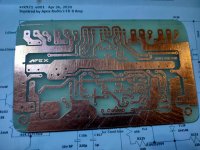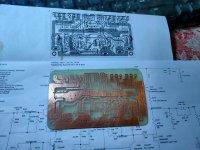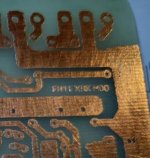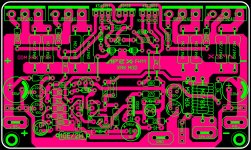Quick question w/ regards to the audio quality of this vs prebuilt amp - how would the FH9HVX w/ premium components and a meanwell 350W 48V supply sound vs an equivalent $ mass-produced consumer amp (e.g. Sony STRDH190) - detail/bass response/general quality? Not sure whether the price point of this is as a hobby project, or it would be punching above it's BOM cost ignoring time spent.
For context this would be driving a pair of the FAST speakers w/ TC9FD replacement 10F/8424 & RS225-8 FAST / WAW Ref Monitor.Will likely upgrade to the 10F drivers and Antek PSU down the line. Come from an electrical engineering background with a lot of hands on prototyping experience thru to production, just new to the audio side of things.
Cheers,
For context this would be driving a pair of the FAST speakers w/ TC9FD replacement 10F/8424 & RS225-8 FAST / WAW Ref Monitor.Will likely upgrade to the 10F drivers and Antek PSU down the line. Come from an electrical engineering background with a lot of hands on prototyping experience thru to production, just new to the audio side of things.
Cheers,
Hi AS8912,
That’s a great question and although I have not personally heard the Sony amp you refer to, all I can go by is the published specs and price they sell it for. For $150, you are getting great value with a box ready to use and a claimed 100w at 1% THD. It has bluetooth and remote control. A nice looking case. Amazing really.
Most DIY discrete output Class AB amps of 50w or higher power that are reasonably designed by an experienced designer will in general, sound better than a $200 to $700 commercial amp. This mostly has to do with the size of PSU and quality of parts. The bass punch will be better.
The main difference with an amp like the FH9HVX is that it’s got much high quality parts that pass a whole lot more current with low impedance. The PCBs are made better with thicker traces, the caps are better, the discrete output MOSFETs are probably more powerful and can handle higher dissipation. If you make your own linear PSU you will know it can deliver more current. The FH9HVX was designed based on Apex FX8 modified for Hexfets vs lateral FETs. The FX8 was an excellent sounding amp to start with.
The FH9HVX has a predicted THD of 0.0038% at 100w into 4ohms. The Sony says to go no lower than 6ohms and is 1% THD or 260x higher distortion. The shape of harmonic distortion is important too. FH9HVX has dominant 2nd order lower 3rd order and mostly descending higher orders except 5th harmonic is higher than 4th. This says it should sound less fatiguing than a traditional amp with an LTP in our stage and push pull output (dominant third order usually).
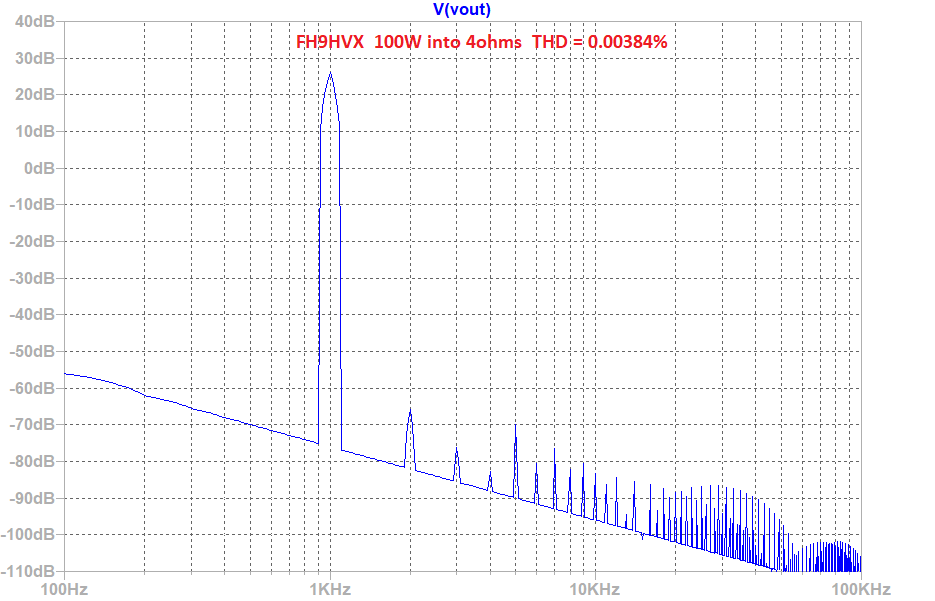
The above is about at the limit of the onset of clipping. Playing it well below at 40w to 50w and the higher frequency higher order distortion will be much lower.
However, at 15w to 25w, the Sony will probably sound fine. But looking at its spring clip terminals on the back, you won’t be able to get the highest damping factor from a poor spring clip connection vs a 5 way banana jack binding post.
You might like the Sony a lot and it’s tough to beat its convenience. But the bass authority and midrange clarity and easy fatigue free sound of the FH9HVX is really amazing sounding. It’s one of my best amps and I am comparing to some very nice Class A amps even. If you build it, I can almost guarantee you will love the sound quality. Whether it’s better than the commercial $150 Sony, that’s up to your ears to decide. 🙂
That’s a great question and although I have not personally heard the Sony amp you refer to, all I can go by is the published specs and price they sell it for. For $150, you are getting great value with a box ready to use and a claimed 100w at 1% THD. It has bluetooth and remote control. A nice looking case. Amazing really.
Most DIY discrete output Class AB amps of 50w or higher power that are reasonably designed by an experienced designer will in general, sound better than a $200 to $700 commercial amp. This mostly has to do with the size of PSU and quality of parts. The bass punch will be better.
The main difference with an amp like the FH9HVX is that it’s got much high quality parts that pass a whole lot more current with low impedance. The PCBs are made better with thicker traces, the caps are better, the discrete output MOSFETs are probably more powerful and can handle higher dissipation. If you make your own linear PSU you will know it can deliver more current. The FH9HVX was designed based on Apex FX8 modified for Hexfets vs lateral FETs. The FX8 was an excellent sounding amp to start with.
The FH9HVX has a predicted THD of 0.0038% at 100w into 4ohms. The Sony says to go no lower than 6ohms and is 1% THD or 260x higher distortion. The shape of harmonic distortion is important too. FH9HVX has dominant 2nd order lower 3rd order and mostly descending higher orders except 5th harmonic is higher than 4th. This says it should sound less fatiguing than a traditional amp with an LTP in our stage and push pull output (dominant third order usually).
The above is about at the limit of the onset of clipping. Playing it well below at 40w to 50w and the higher frequency higher order distortion will be much lower.
However, at 15w to 25w, the Sony will probably sound fine. But looking at its spring clip terminals on the back, you won’t be able to get the highest damping factor from a poor spring clip connection vs a 5 way banana jack binding post.
You might like the Sony a lot and it’s tough to beat its convenience. But the bass authority and midrange clarity and easy fatigue free sound of the FH9HVX is really amazing sounding. It’s one of my best amps and I am comparing to some very nice Class A amps even. If you build it, I can almost guarantee you will love the sound quality. Whether it’s better than the commercial $150 Sony, that’s up to your ears to decide. 🙂
Last edited:
That's great, I really appreciate the further explanation. I see the pattern that a decent number of the diy amps orders of magnitude lower THD for the same price, but didn't know if that was the whole picture, as I didn't know how aggressively OEMs can get the price down with scale, or whether they just maximize margins... Although I'm on a tight budget, I'm going diy for the sound and satisfaction, not the convenience - looks like the FH9HVX is a solid amp to get me started. Thanks!
I am building the FH9HVX - boards are stuffed - just waiting for my PSU parts and chassis to arrive. It will join my "imitation" First Watt F7 Class A amp in a bi-amp setup.
I can recommend this as a project if you are just getting started in the hobby, especially if you have an electronics background.
There is really no way a decent discreet component DYI amp can compete with a mass-produced one on a strictly cost basis. You WILL spend more doing your own build. But you will end up with a superior product and here are some reasons:
1) It will sound better (this can be subtle if you are not used to critical listening or use live performances as a reference point, or if you have lousy speakers or bad source material).
2) When the mass-produced device breaks after a couple of years, it may not be repairable. If you build your own, you can repair and/or modify to your heart's content.
3) There is enormous satisfaction in building - priceless!

I can recommend this as a project if you are just getting started in the hobby, especially if you have an electronics background.
There is really no way a decent discreet component DYI amp can compete with a mass-produced one on a strictly cost basis. You WILL spend more doing your own build. But you will end up with a superior product and here are some reasons:
1) It will sound better (this can be subtle if you are not used to critical listening or use live performances as a reference point, or if you have lousy speakers or bad source material).
2) When the mass-produced device breaks after a couple of years, it may not be repairable. If you build your own, you can repair and/or modify to your heart's content.
3) There is enormous satisfaction in building - priceless!

Thanks, Wtnh. Cost wise, this amp as the thread title says, is "Cost Conscious". Using a genuine BOM with quality parts from Mouser is about $35 (per amp) as I recall. There are no hard to find or expensive parts in this amp at all. If you don't have a heatsink or chassis, you can be creative and use something else for a heatsink - like a $10 cast iron griddle that serves as both the heatsink and the chassis 🙂
You are spot-on about the sense of satisfaction though. Interesting thing - all of my DIY amps seem to keep working without any issues (no post-build failures yet - knock on wood).
The Cast Iron Griddle Amp - a Budget Conscious Heatsink Solution
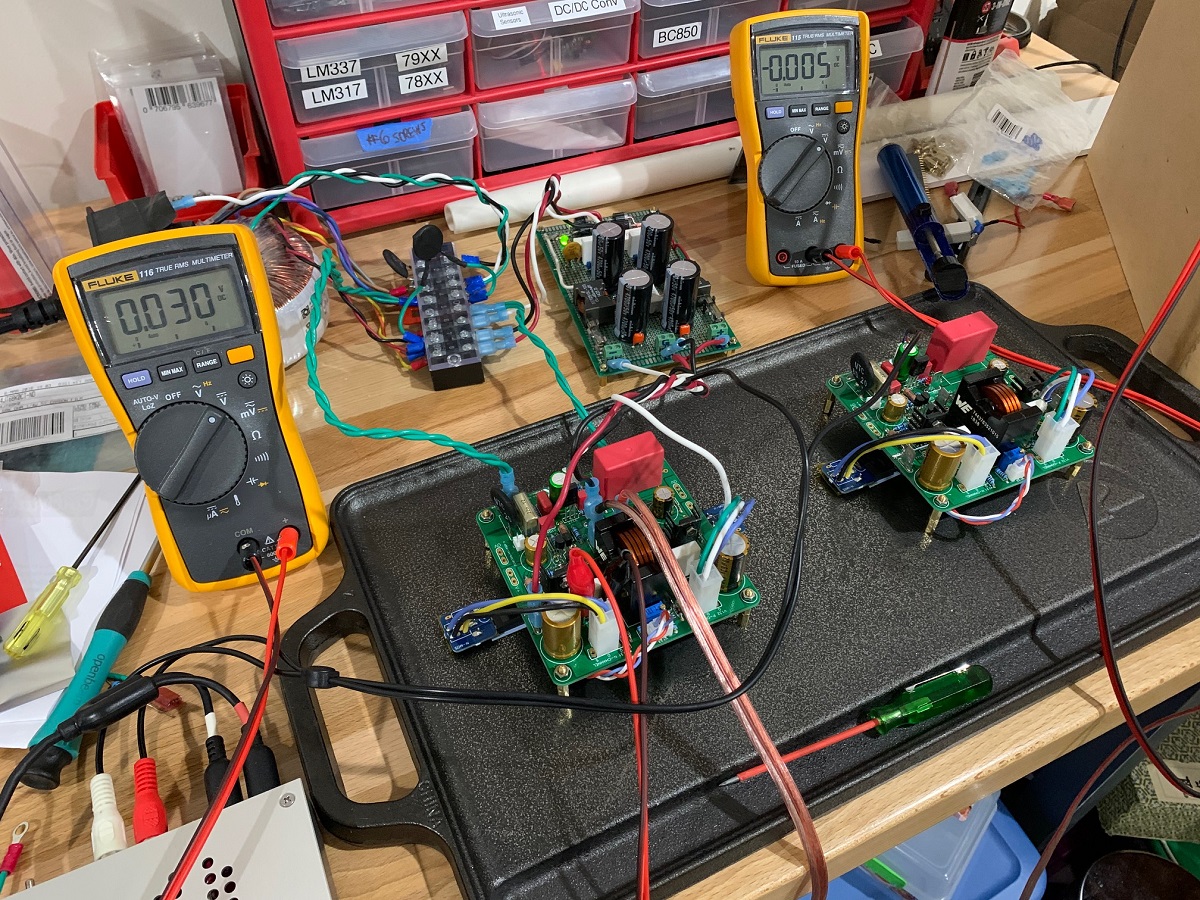
You are spot-on about the sense of satisfaction though. Interesting thing - all of my DIY amps seem to keep working without any issues (no post-build failures yet - knock on wood).
The Cast Iron Griddle Amp - a Budget Conscious Heatsink Solution
Last edited:
I listen to this amp almost everyday. I love it’s looks and how it sounds. I am surprised no one else is willing to give it a try. Really, you can save a bundle on heatsinks this way.
I've changed my plan a bit after readying through ~150 pages of the more recent 10F/RS225 FAST posts, likely going 10F/RS225 w/ the FAST TL enclosure to not need a subwoofer. You said it's sublime with the 40w Alpha Nirvana Class A amp, however that's both class A and only 40W, when it sounds like the speakers should be run with 75W+.
How does the FH9HVX sound compared to the Alpha Nirvana?
How does the FH9HVX sound compared to the Alpha Nirvana?
The FH9HVX sounds better in a low sensitivity speaker such as 10F/RS225 FAST (82.4dB at 2.83v). The sound of Alpha Nirvana being Class A has smoother midrange like vocals but I can’t say it is better than FH9HVX overall unless it’s really critical listening. If you play at louder levels, the FH9HVX may be more to your liking.
Hi Andrewlebon,
You mean FH11 XRK Mod? That’s a nice amp - just the big brother to the FH9 - although I find that a single pair of Fairchild FQA’s can handle same power as two-pairs of IRFP240/9240’s.
I like it that you still etch your own boards. There’s something to be said about going from pdf to PCB on 2hrs!
You mean FH11 XRK Mod? That’s a nice amp - just the big brother to the FH9 - although I find that a single pair of Fairchild FQA’s can handle same power as two-pairs of IRFP240/9240’s.
I like it that you still etch your own boards. There’s something to be said about going from pdf to PCB on 2hrs!
Obviously OT, but I just wanted to say that, even though I'm generally not big on Country music, I'm a huge fan of Chris Stapleton.
His new album "Starting Over" is excellent. Super highly recommended
Starting Over by Chris Stapleton on Spotify
TIDAL
Are you saying there was whiskey involved with your build?

Hmm... PCB says otherwise.
Nice build though!

I like Chris Stapleton too. I have maybe 3 songs from that Album on my playlist.
Attachments
Hi Andrew,
I do like that song a lot. I also like Traveller, Parachute, and Was it 26.
What are you using for the power supply on your FH11?
I do like that song a lot. I also like Traveller, Parachute, and Was it 26.
What are you using for the power supply on your FH11?
- Home
- Group Buys
- FH9HVX - Budget Conscious 100w Class AB for Lean Times
